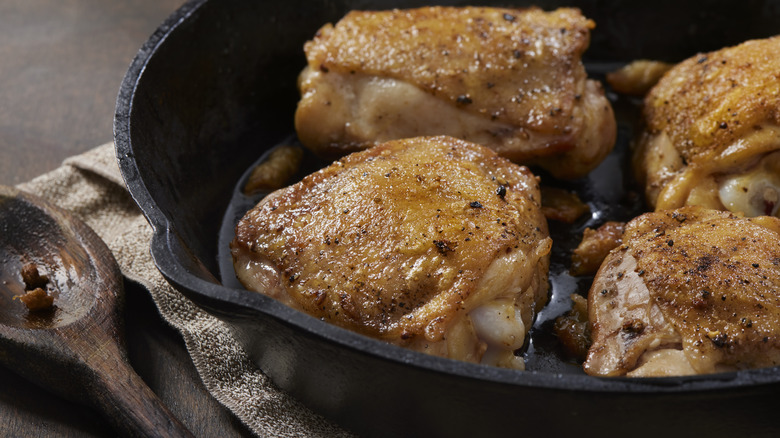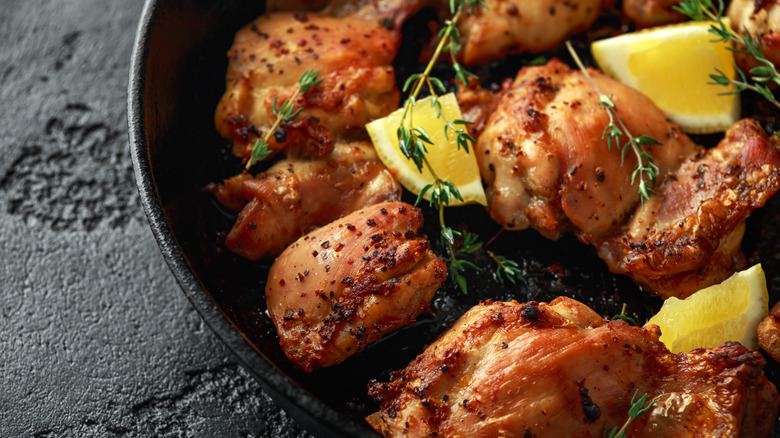The Timing Difference When Cooking Bone-In Chicken Thighs Vs Boneless
Cooking chicken is an art that involves a delicate balance of time, temperature, and technique. Among the various cuts, chicken thighs, renowned for their succulence, are a favorite for many. However, the choice between bone-in and boneless thighs can significantly impact your cooking time.
Dark meat, found in chicken thighs, is inherently richer and juicier than its white counterpart. This is due to the higher fat content and the presence of more connective tissue. Consequently, it's a culinary truth that dark meat requires more time to cook compared to leaner white meat. However, when it comes to bone-in versus boneless thighs, another layer of complexity arises.
Bone-in chicken thighs demand more patience in the kitchen, and this isn't solely because of the dark meat. The bone, acting as a natural insulator, slows down the cooking process. The thickness of the thighs combined with the bone's insulating properties means that the heat takes longer to penetrate, ensuring the meat cooks evenly and thoroughly.
For chicken thighs, a medium-high heat of 400 degrees Fahrenheit is recommended. This is high enough to ensure a burnished exterior — and crispy skin if it is still present — while low enough to allow the meat to cook through without burning. At this temperature, a bone-in thigh will take roughly 40 to 45 minutes to reach an internal temperature of 375 degrees. For boneless thighs, shave 10 to 15 minutes off of the cooking time as they are generally skinless and much thinner.
How to maximize the flavor of chicken thighs
The decision between bone-in and boneless chicken thighs isn't just a matter of convenience; it's also about the end result you're aiming for in your culinary masterpiece. Bone-in thighs shine when it comes to roasting or grilling. Their uniform shape and the presence of the bone contribute to a more even cooking process. The bone's insulating properties and the fact that there is less surface area result in a cut that's moist and tender. Just don't put any stock in the old chestnut that bones add more flavor — a theory that has been disproved.
On the flip side, boneless thighs carve out their own niche in the culinary world. The thinness that comes from excising the central bone makes them perfect for quick-cooking methods like stir-frying, where speed is of the essence. Cube them up, marinate, toss them in a hot wok, and watch them cook through swiftly. The absence of a bone makes them ideal for dishes where you want the chicken to take on the flavors of marinades or spices without the added complexity of bone-in cooking. Additionally, boneless thighs are stars in creating grilled or fried chicken sandwiches. Their thin, consistent shape allows for even cooking, ensuring that every bite shines with the rich, savory flavor of dark meat chicken.
In the end, the choice between bone-in and boneless chicken thighs boils down to use. Whether you're aiming for a slow-roasted masterpiece or a quick and flavorful stir-fry, understanding the timing nuances of each cut is critical.

